DIY Magic: Master the Art of Furniture Refinishing
Giving your old furniture a makeover is a great way to create unique pieces and add personality to your space.
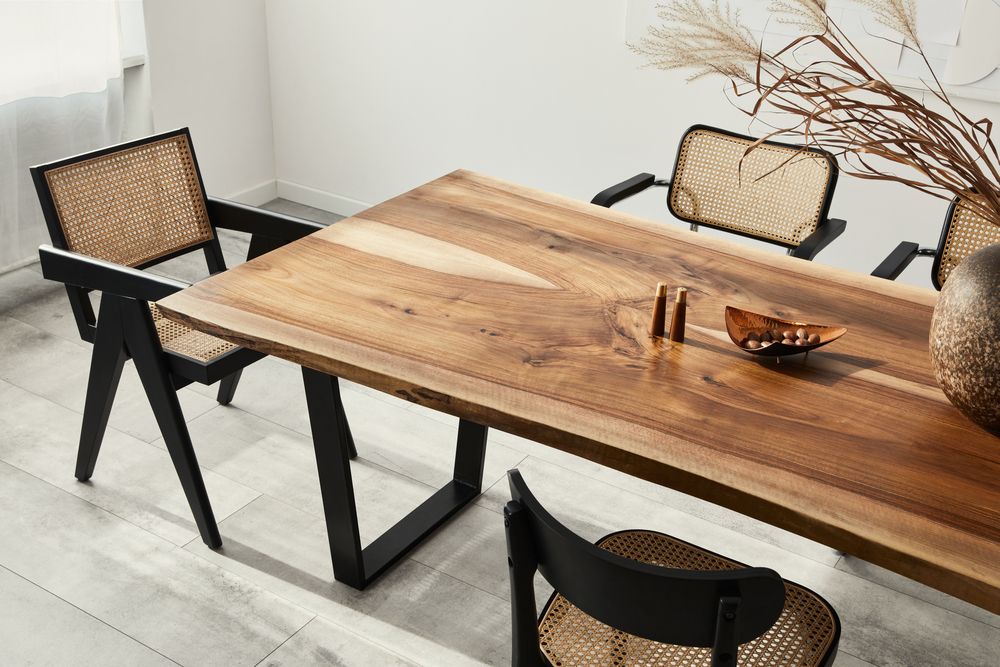
If TikTok has taught us anything, it is that furniture refinishing is a big business. Giving old furniture a makeover is a great way to add personality to your decor, save money, and keep perfectly good pieces from ending up in landfills. It can also be a very profitable business if you have a knack for it and a lot of patience.
But what if you don't know where to start? To simplify this process, we've compiled this guide to help you get started with some easy and practical tips for refinishing wood furniture. These simple tips will give you the confidence to tackle any old furniture and transform it into a beautiful and unique piece you can be proud of.
Refinishing vs. restoring furniture: what's the difference?
Before we get started, let's clarify the difference between refinishing and restoring furniture. While these two phrases are often used interchangeably, they are different. While refinishing can be part of the restoration process, restoration usually involves more extensive repairs and a higher level of expertise.
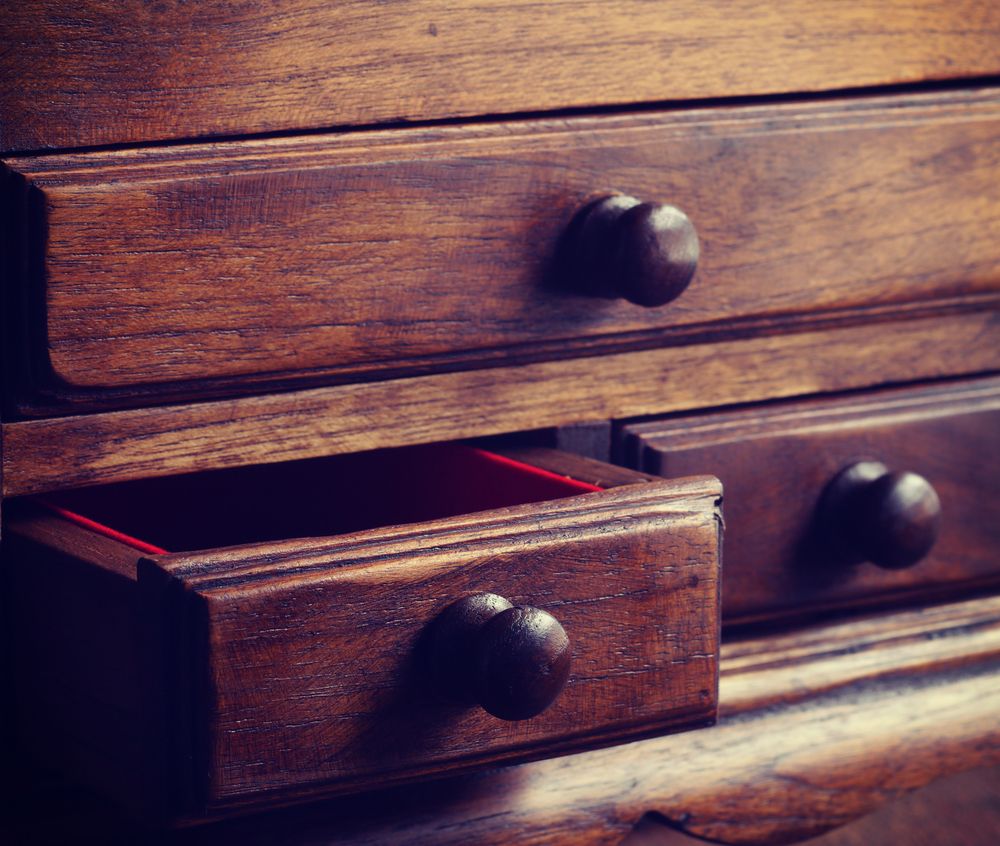
Before we get started, let's clarify the difference between refinishing and restoring furniture. While these two phrases are often used interchangeably, they are different. While refinishing can be part of the restoration process, restoration usually involves more extensive repairs and a higher level of expertise.

Restoration goes further and involves repairing or replacing damaged parts of the furniture and returning it to its original condition as much as possible. This process might include fixing joints, replacing missing or damaged pieces, or repairing deep scratches and dents.
What to look for in a wood furniture piece you want to refinish
There is nothing worse after starting a project than realizing you made a mistake or have potentially damaged the furniture. That's why it's important to select the right piece of furniture to begin with. Doing so can save you a lot of time and frustration. Here is what you should look for in furniture you want to refinish.
Avoid furniture with veneer
While you can refinish pretty much any piece of wooden furniture, if this is your first attempt, avoid items with a veneer. A veneer is a thin layer of wood glued onto a less expensive or manufactured wood base. It can also be attached with nails or screws. Removing it can damage the veneer and the material underneath it. This can become a costly lesson as you'll have to replace the damaged part with a more expensive alternative.
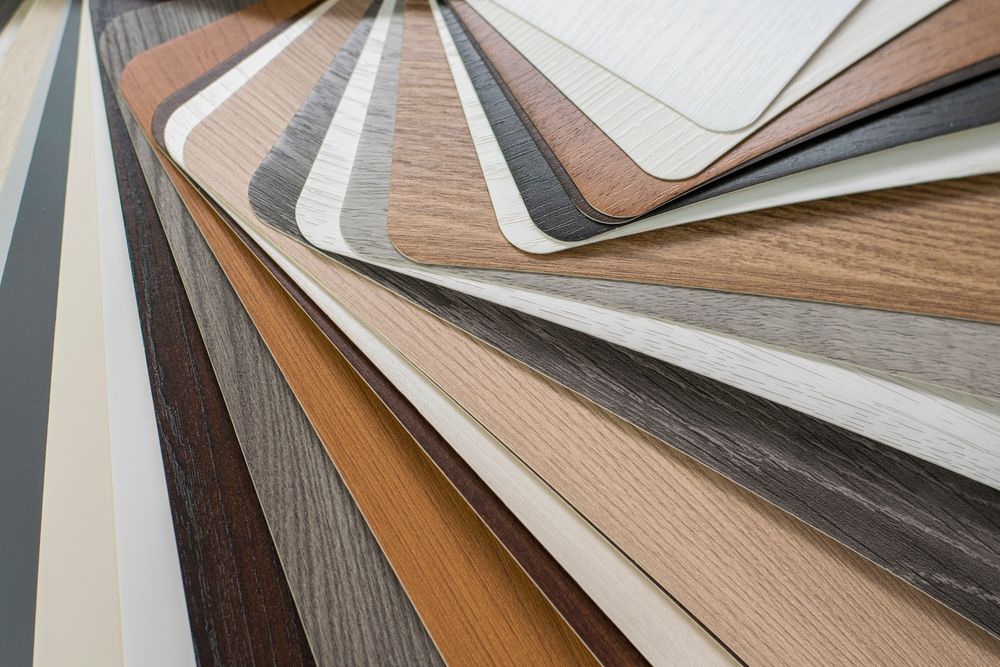
Skip wood furniture with lots of details
While intricate furniture with many details can be appealing, sanding all those carvings and moldings can be quite challenging, especially without specialized tools and know-how. These seemingly pretty details can easily get damaged during the process. Instead, look for furniture with simple, clean lines that will be easier to work with.
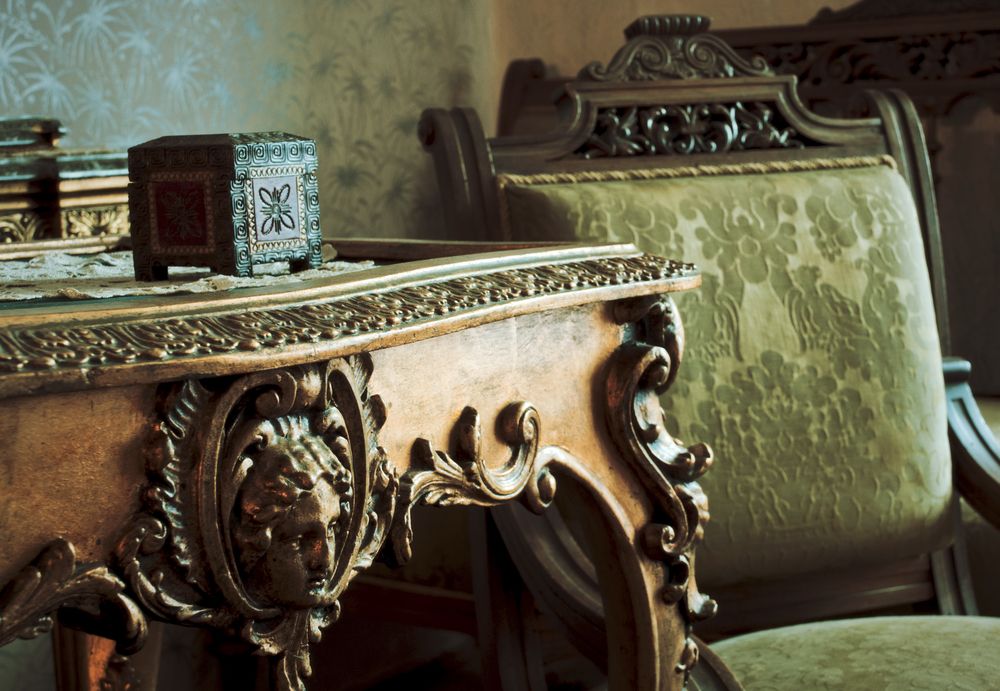
Look for stability and craftsmanship
Inspect any piece of furniture you're considering refinishing for damage. Things like cracks or splits could compromise the piece's structural integrity. You'll also want to avoid any pieces that wobble or have signs of damage. Look for stability and choose furniture that is in good condition, which will make your project easier.
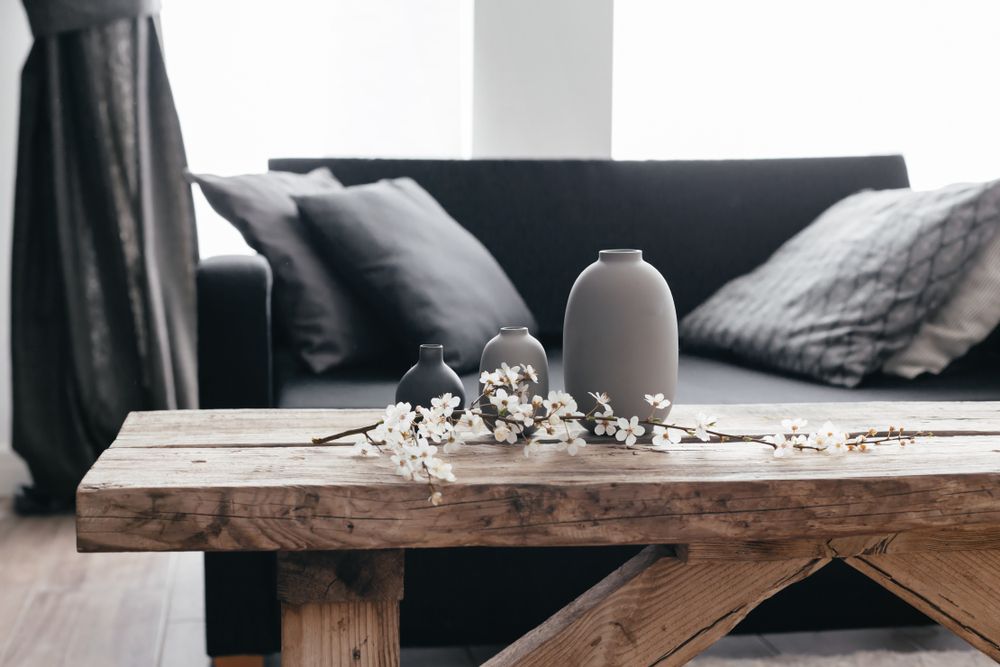
Must-have refinishing supplies
Proper tools and supplies are not just a luxury, but a necessity when it comes to refinishing your furniture. They are the key to preparing the piece for refinishing and ensuring you can apply the correct products to achieve the look you're aiming for. Here is what we strongly recommend before you start:
- Sandpaper: You'll need sandpaper to remove the old finish and prepare the surface of the wood for a new one. Start with a coarse grit to remove the existing finish, and then work your way up to a finer grit to smooth the surface of the wood.

- Paint stripper: You'll need a good paint stripper to remove any stubborn paint or finish left behind by the sandpaper. Choose a high-quality product that is safe to use and won't damage the wood. Follow the product instructions to make sure it doesn't damage the furniture.
- Wood stain: Stain adds color to the wood and can help enhance its natural beauty. Choose a stain that works with the type of wood you're working with and will give you the desired finish.
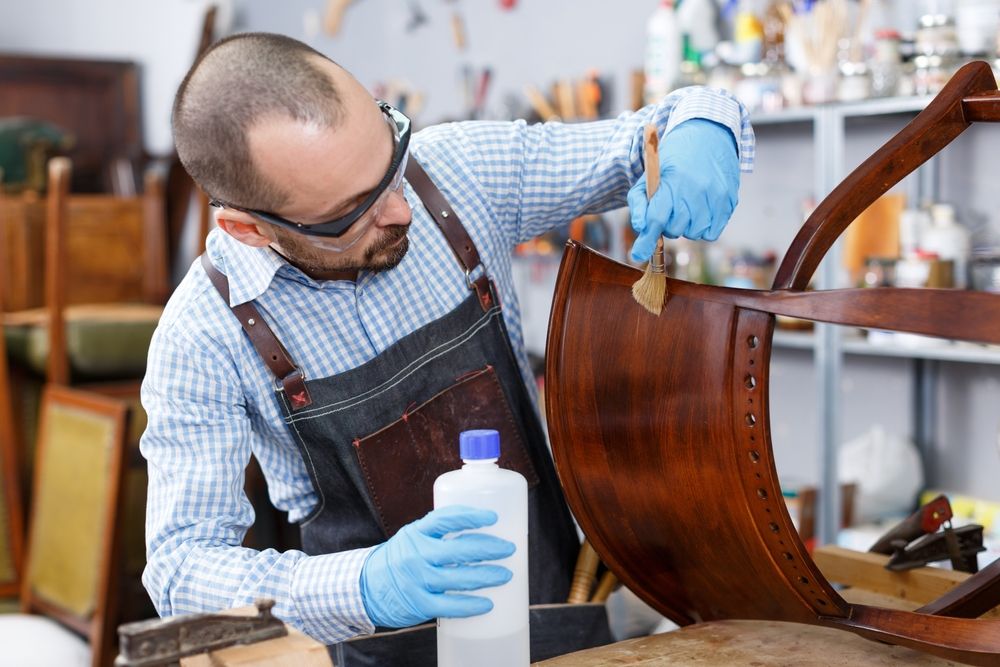
- Sealant: After the stain is dry, you'll need a clear coat to protect the finish. Choose a high-quality sealant that will give you the protection you need. Polyurethane is a popular choice for this purpose, as it's durable and easy to apply.
- Paint brush, roller and rags: These versatile tools are your best friends in the refinishing process. You'll need them to apply the stain, paint or sealant on the furniture. We advise using several brushes, rags, and rollers for the different products. A rag is handy for wiping away any excess stain or finish and buffing the wood's surface, while a roller might be better for applying paint or sealant.
- Additional: Don't forget the putty knife and screwdriver for those unexpected repairs. And, of course, your safety gear-disposable gloves, dust mask, and safety goggles.
How to refinish different types of wood
Not all wood is created equal. While you might treat most woods the same way, there are a few different types of wood furniture that require special care.
Outdoor teak furniture
Teak is a durable wood that requires little maintenance. To refinish outdoor teak furniture, clean it with a mild soap and water solution, then apply teak oil to protect it from the elements. To preserve your furniture, do this at the beginning and end of each season.
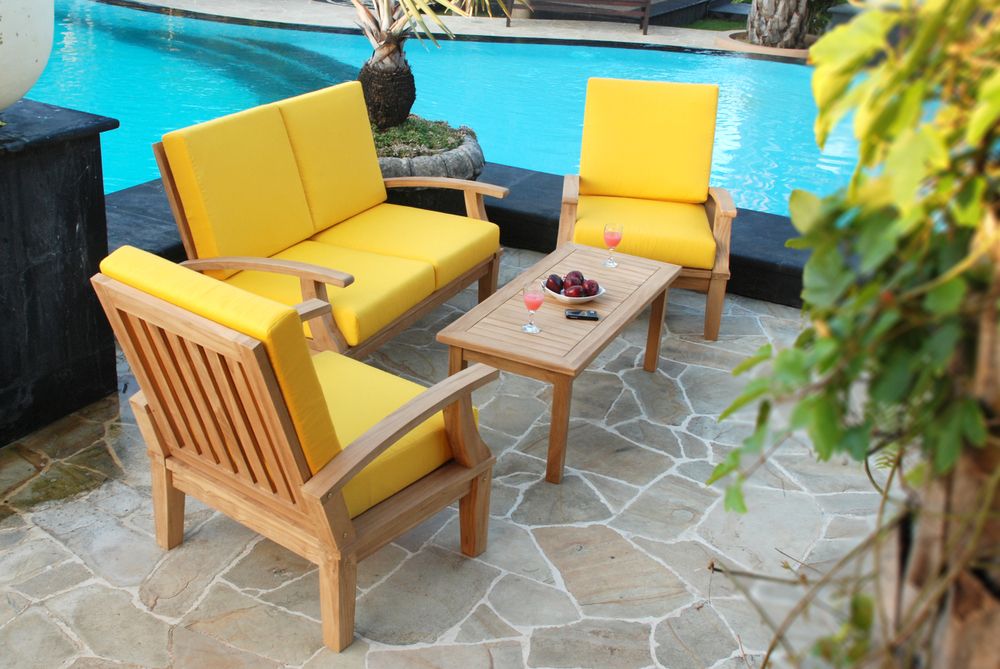
Veneer furniture
Veneer furniture should be handled carefully to avoid damaging the thin layer of wood on the surface. To refinish veneer furniture, clean it thoroughly and sand it lightly, then apply a stain and clear coat to the surface.

Faded polywood furniture
Polywood is a durable material that can fade over time. To restore faded polywood furniture, sand it lightly and then apply a coat of polyurethane to protect it from the elements. This will also help to bring back the original color and make them look brand new.
Pressed wood furniture
Pressed wood is a low-cost material that is not very durable. To refinish pressed wood furniture, wipe it clean and sand it very lightly. Remove excess dust and then apply a coat of primer followed by a coat of paint.
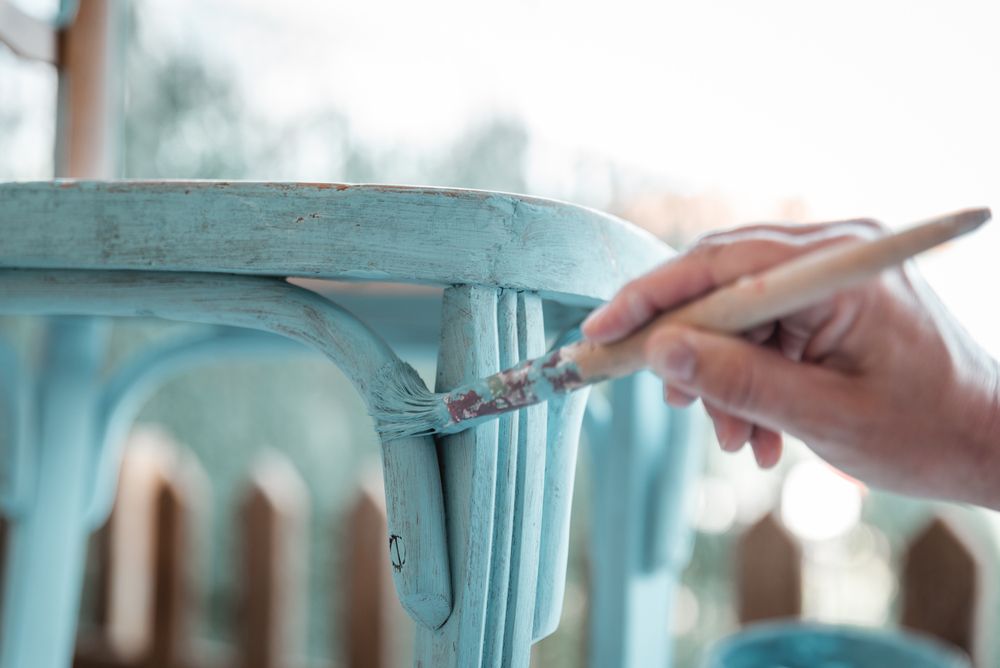
Mahogany furniture
Mahogany is a beautiful and durable wood that can be easily refinished and stained. To restore mahogany furniture, sand it lightly and apply a stain followed by a clear coat to protect it from the elements.
Acacia wood outdoor furniture
Acacia wood is a durable material that requires little maintenance. To refinish acacia wood outdoor furniture, clean it with a mild soap and water solution, then apply a wood sealer to protect it from the elements.

Ikea furniture
Ikea furniture is often made from manufactured wood or particle board. To refinish Ikea furniture, clean it thoroughly and sand it lightly. Make sure to remove dust with a damp microfibre cloth. Apply a thin coat of primer followed by a coat of paint.
MDF furniture
MDF stands for medium-density fiberboard, and it’s an engineered wood composite. It’s created from leftover pieces of wood mixed with resin and can be very dense. To refinish MDF furniture, roughly sand the spots that need fixing, apply filler and sealer, then sand again. Wipe away the dust and apply a coat of primer followed by a coat of paint.
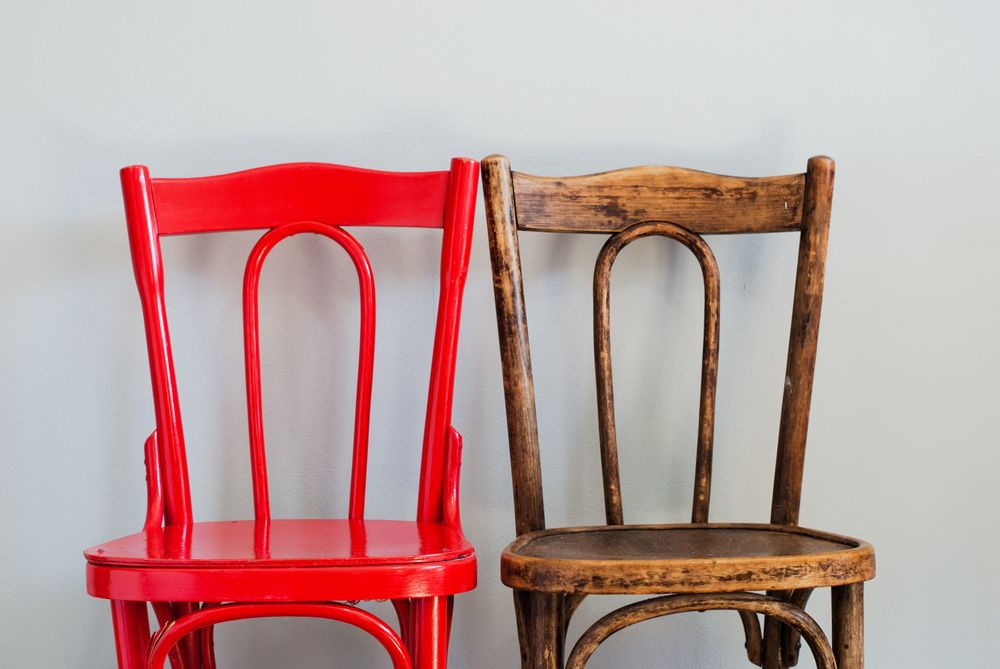
Particle board furniture
To refinish particle board furniture, start by cleaning it thoroughly and repairing any damage. Sand it lightly, and apply a coat of primer. Lightly sand it again and follow with a coat of paint.
Pine, oak, cedar walnut furniture
To refinish pine, oak, cedar or walnut furniture, start by sanding it with coarse sandpaper to remove any finish, then sand again with medium grit sandpaper. Remove dust and apply a stain, followed by a clear coat to protect it from the elements.
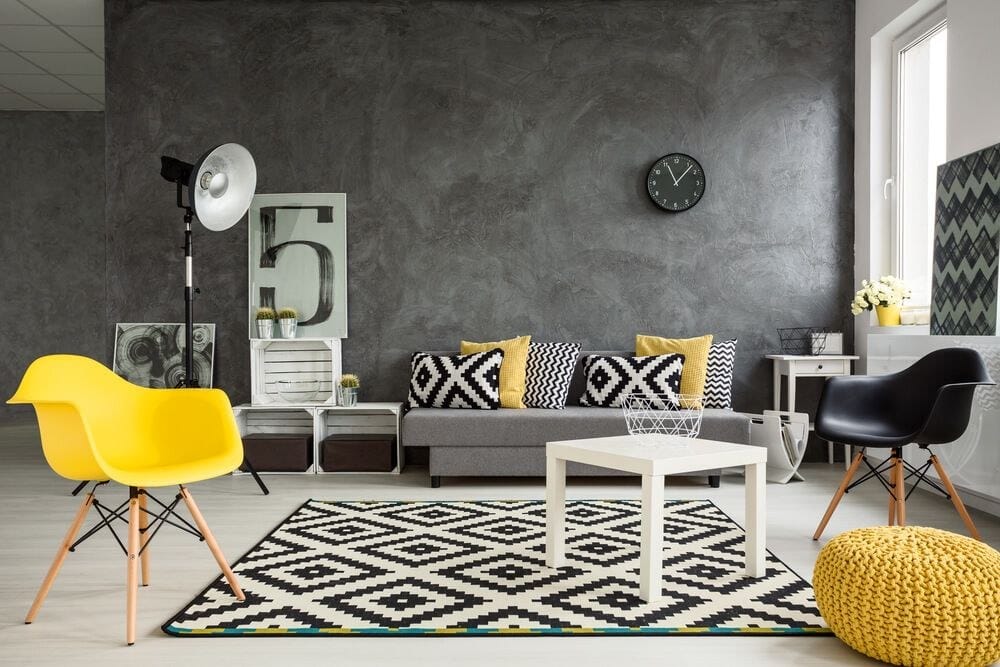
Step-by-step guide for refinishing wood furniture
No matter which type of wood you’re working with, the process of refinishing wood furniture is pretty much the same. Before you start, ensure you have prepped the area with a clean and accessible workstation. You can use a drop cloth or some paper to protect the area you’ll be working in. Also, ensure it’s fully ventilated, especially if you plan on sanding and using finishing products.
Step 1 - Remove hardware: Before you start working on any furniture, remove all the hardware and set it aside. You might also have to remove pieces like doors or drawers and set them aside.
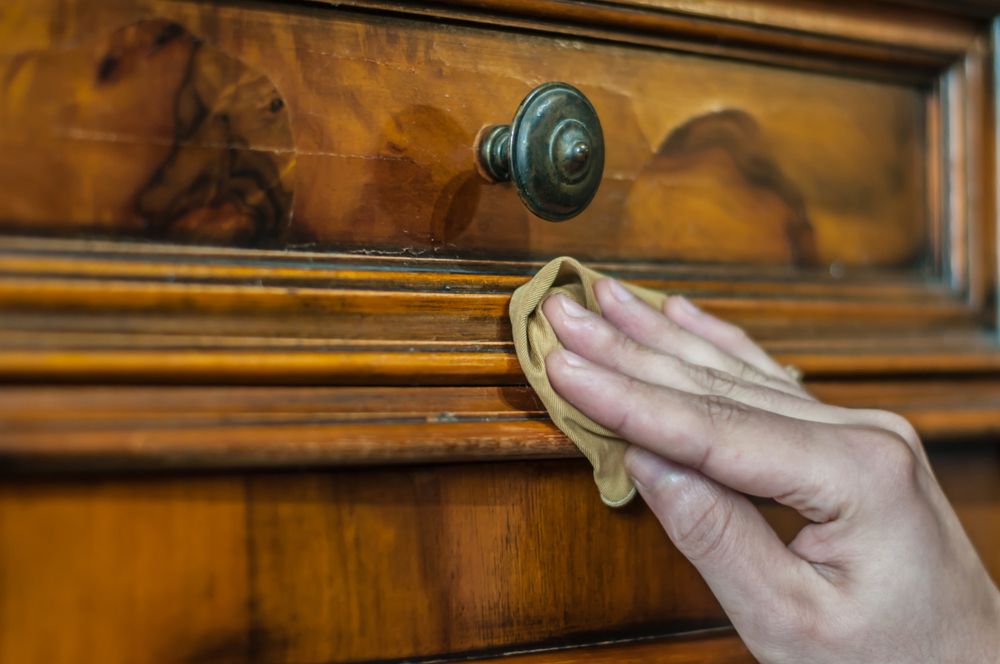
Step 2 - Clean: Clean the furniture you’ll be working on with a cleaner and a damp rag or a microfibre cloth and inspect for damage and discoloration.
Step 3 - Strip the top layer: Use sandpaper to remove the top layer and any scratches, stains or discoloration. You might have to do it a few times to get rid of all the imperfections. We recommend using a sander to make the job easier.
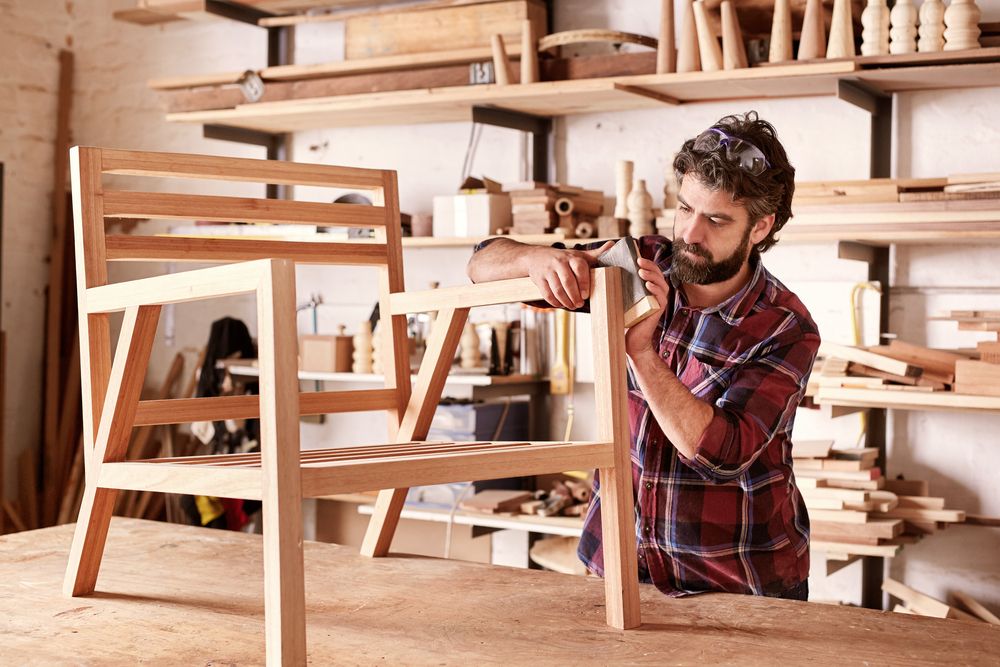
Step 4 - Fill in holes: Use epoxy or wood filler to patch up any holes or deep nicks that didn’t come off during sanding. Wait for it to dry, and light sand again to smooth out the surface.
Step 5 - Stain/paint: Once you have cleaned and sanded your furniture, give it a quick wipe with a microfibre cloth to remove dust. You are now ready to stain or paint your furniture. Apply one or two coats as needed. To create a more saturated effect, you might need to add additional coats of paint or stain.

Step 6 - Apply top coat: Once the furniture is dry, apply a sealant to protect the wood. You might have to leave it overnight to ensure proper drying. A sealant will protect the stain or paint from coming off and make the furniture easier to keep clean.
Additional tips for success
Here are a few additional tips to help you with your furniture refinishing project.
Use the right tools and equipment
The right tools can make a huge difference when refinishing furniture. Make sure you use good-quality sandpaper, a paint stripper, a scraper, a paintbrush or roller, and a sealer. Remember that different furniture types might require various tools and equipment.
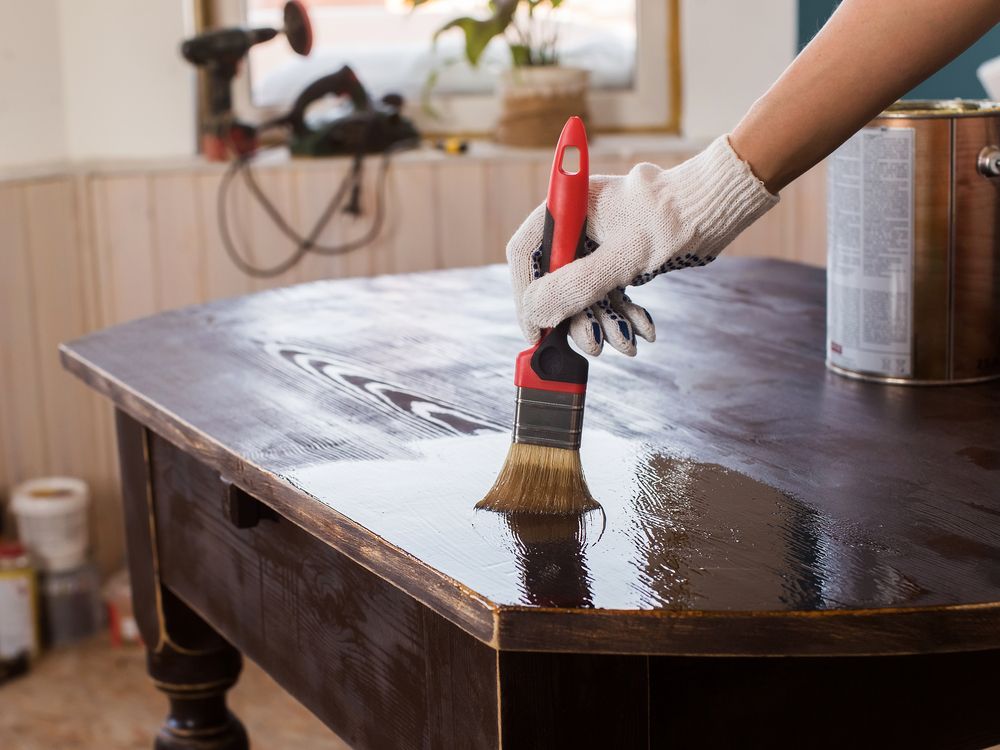
What works for walnut might work differently for veneer furniture. Using the wrong equipment or products can unintentionally damage your furniture. Make sure to research and plan accordingly before starting a project.
Work in a well-ventilated area
When refinishing furniture, you'll likely be exposed to chemicals or fumes. These can be hazardous if inhaled in large amounts or over a long period of time. Make sure you work in a well-ventilated area, such as a garage or outdoor space, to reduce the risk of inhaling these chemicals and keep the workspace safer.

Take necessary safety precautions
Before embarking on these types of projects, you should also consider other factors like temperature, humidity, and dust levels. Working with power tools and chemicals can be dangerous if proper safety precautions are not taken. You also want to protect yourself from inhaling any hazardous fumes or dust.

Read and follow all warning labels and instructions on chemicals and tools. Always wear protective clothing such as gloves and a mask. As with any other project, it's a good idea to have a first aid kit nearby and to be aware of emergency procedures in case of accidents or injuries.
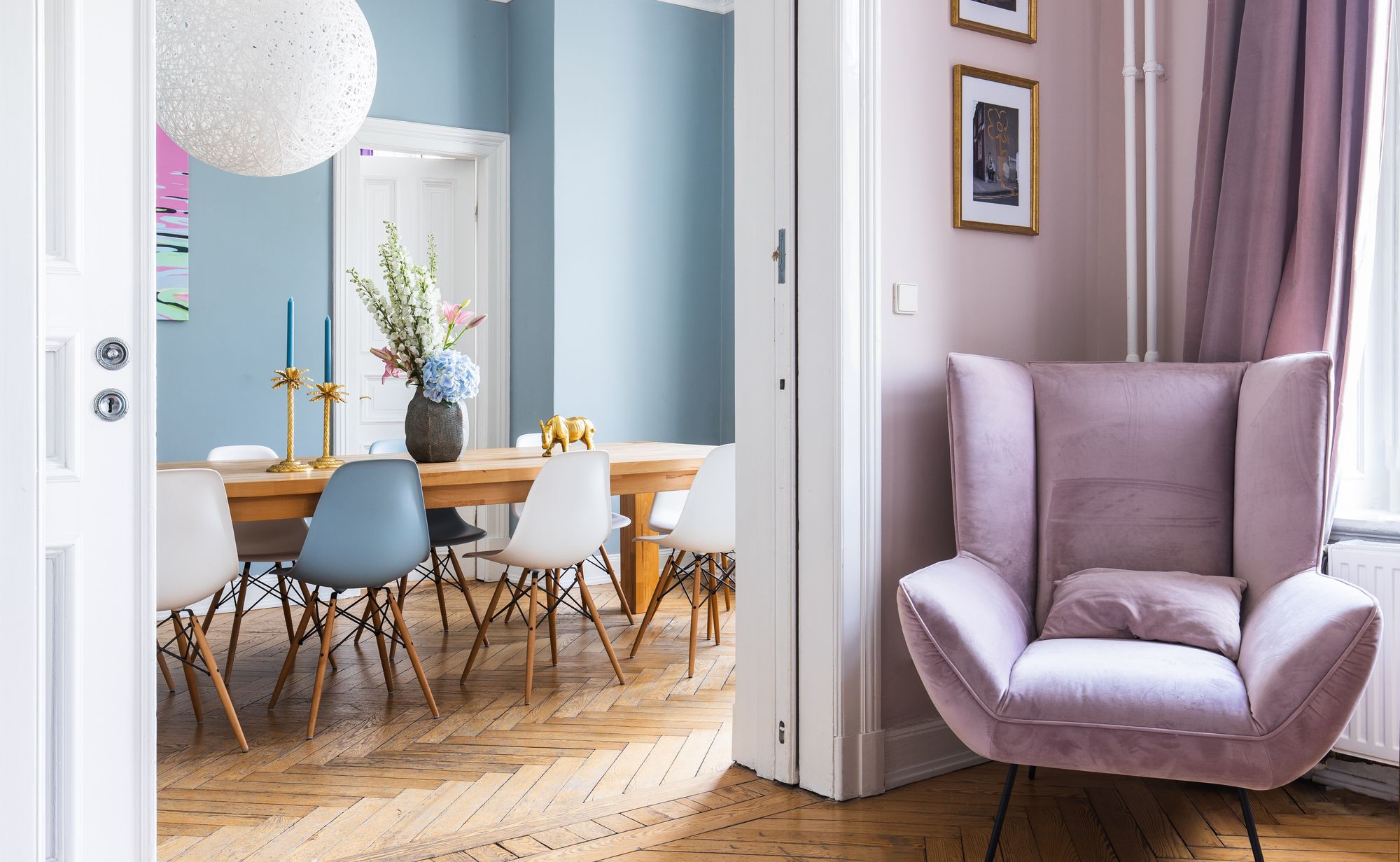
Avoid common mistakes
Many beginners who start their first furniture refinishing project either don't sand enough or over sand. They also don't clean or prep the surface or use the wrong product. To avoid making these mistakes, always research and plan before you start. It's important to follow instructions carefully and take the time to prep and finish the surface properly.
Conclusion
Refinishing wood furniture can be a very rewarding project and an opportunity to create a one-of-a-kind decor piece for your home. Who knows? You might even discover a new talent you never knew you had. While it might be a daunting project to start, we hope our post has given you valuable tips for tackling any furniture project in the future.
FAQ
How to refinish furniture with paint?
To refinish furniture with paint, start by cleaning and sanding the surface. Apply a primer, then paint with a brush or spray paint. Finish with a clear coat for added durability.
How to refinish wood furniture without stripping?
To refinish wood furniture without stripping, use a chemical substance like a deglosser to remove the shine and any dents or cracks from the surface. Then, apply a coat of primer and paint, or stain and finish with a clear coat.
How to restore wood furniture with vinegar?
To restore wood furniture using vinegar, mix equal parts vinegar and water. Apply the mixture generously to the surface with a cloth. Let it sit for a bit, then wipe it off with a clean cloth. Repeat as necessary.
How to refinish furniture without sanding?
To refinish furniture without sanding, use a liquid deglosser to remove the shine from the surface. Then, apply a coat of primer and paint, or stain and finish with a clear coat.
How to refinish furniture with chalk paint?
To refinish furniture with chalk paint, start by cleaning the surface. Apply the chalk paint with a brush, then lightly sand it to create a distressed look. Finish with clear wax or polyurethane for added durability.
How to refinish painted furniture?
To refinish painted furniture, start by cleaning and sanding the surface. Apply a coat of primer, then paint with a brush or spray paint. Finish with a clear coat for added durability.
How to restore cane furniture with linseed oil?
To restore cane furniture with linseed oil, clean the surface with a mild soap and water solution. Apply a thin coat of linseed oil with a cloth, and let it soak in for a few hours. Wipe off any excess oil and repeat as necessary.
